
Iran’s southeastern Sistan-Baluchestan province has lost 1,440 billion rials ($34.2 million at the official exchange rate of 42,000 rials per dollar) in earnings from tourism as many potential visitors stay away due to the impact of the coronavirus, according to Alireza Jalalzaei, the provincial tourism chief. “Sistan-Baluchestan is a four-season travel destination and even though the province holds vast tourism capacities, it has taken some 1,440 billion rials hit from the coronavirus outbreak from mid-Esfand 1398 (early March 2020) to the end of the month Dey (January 19),” the official said on Wednesday. The official noted that Sistan-Baluchestan has set sights on [a significant] tourism development, and its travel infrastructure has been drastically extended over the past couple of years. “From the year 1396 (2017) onwards, the number of travel infrastructure in Sistan-Baluchestan has raised from 40 to 200 ones…. Nowadays tourism of this province has come to fame and distinction,” he explained. Elsewhere in his remarks, the official pointed to various tourism campaigns being launched over the past couple of years, adding the campaign ‘Let’s see Sistan, let’s hear Baluchestan’ has taken a noticeable impact on the tourism thrive of the province mainly by the means of on-line programs. “Despite all the bottlenecks, the province’s tourism has not been forced to shut….” “For instance, the occupancy rate of hotels in [the city of Chabahar] is [currently] more than 90 percent….. and currently, some 100 to 110 ecolodge unites are active across the province,” the official said. Last year, Cultural Heritage, Tourism, and Handicrafts Minister Ali-Asghar Mounesan said that the development of the travel industry across Sistan-Baluchestan province is among the top priorities for the ministry. “I am interested in Sistan-Baluchestan, and the development of this province is a priority for this ministry and the government,” the minister stated. “The majority of my travels during my tenure has been to Sistan-Baluchestan, which I consider it as a safe province with significant values in terms of culture, history, handicrafts, and tourism.” The collective province -- Sistan in the north and Baluchestan in the south -- accounts for one of the driest regions of Iran with a slight increase in rainfall from east to west, and an obvious rise in humidity in the coastal regions. In ancient times, the region was a crossword of the Indus Valley and the Babylonian civilizations. The province possesses special significance because of being located in a strategic and transit location, especially Chabahar which is the only ocean port in Iran and the best and easiest access route of the middle Asian countries to free waters. The vast province is home to several distinctive archaeological sites and natural attractions, including two UNESCO World Heritage sites, namely Shahr-e-Soukhteh (Burnt City) and Lut desert.
Create: Feb 6, 2021 Edit: Feb 6, 2021 Regional News
A hotel in South Africa is using robots to counter some of the challenges of COVID-19. Micha, Lexi and Ariel are on hand to help guests check in, find out more information about on-site facilities and deliver room service requests, as ordered via the hotel's app. Guests can even chat to the robots, whose AI-powered technology is designed to continuously improve their knowledge and interaction skills. Nikhil Ranchod, the co-founder of CTRL Robotics says: "The chatbot is pretty interesting, because these robots have quite a catchy personality. They sort of help out with the smaller things ... and where staff would usually be running up four floors delivering a meal, delivering two meals ... now we've got the facility where they can control the robots themselves and send it off." Hotel Sky in Sandton, north of Johannesburg, had put the technology in place before the pandemic, but is now embracing it as a way to minimize human contact in a country hit hard by COVID-19. The hotel's general manager, Herman Brits, says the venture also raises morale. "It just creates such a nice vibe and excitement for the staff ... They have the opportunity to be part of this journey, and being the innovators in South Africa of this hospitality trend."
Create: Feb 5, 2021 Edit: Feb 5, 2021 International News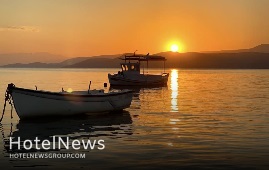
Greek Prime Minister Kyriakos Mitsotakis forecast a strong rebound in tourism in the summer of 2021, saying speedy vaccination drives in key markets for Greece, including Britain and Israel, will pave the way for tourists to return despite the current industry’s gloom, according to a report out of Reuters on Thursday. Tourism, which accounts for about 20 percent of the Greek economy and directly employs one in five workers, collapsed last year as the coronavirus pandemic sent its revenues slumping to 4 billion euros from a high of 18 billion in 2019, according to the report. Since last summer, when the pandemic subsided across Europe, the virus has surged once again, triggering renewed lockdowns and travel restrictions and pushing the region’s death toll above 750,000. Vaccines are now making their way through the most critical populations but the supply is lagging all over the world. “I am a realist, but I am also cautiously optimistic that we will do much better than last year,” Mitsotakis told Reuters. The Prime Minister also defended a decision to coordinate EU member states’ vaccine purchases through the European Commission, saying the bloc’s smaller countries would have faced serious problems negotiating deals on their own.
Create: Feb 5, 2021 Edit: Feb 5, 2021 International News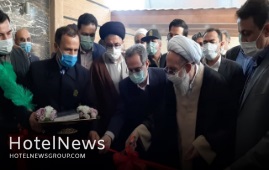
The first-ever hotel in the city of Rey, southeast of Tehran, was inaugurated on Tuesday on the occasion of Ten-Day Dawn (Jan. 31- Feb. 10, marking the victory anniversary of the Islamic Revolution), ISNA reported. The inauguration ceremony was attended by Mohammad Mohammadi Reyshahri, the custodian of the Holy Shrine of Shah Abdol Azim, and Anushiravan Mohseni Bandpey, the governor-general of Tehran province, and several local officials and tourism insiders. A budget of 800 billion rials (about $19 million at the official exchange rate of 42,000 rials per dollar) has been allocated to the project which adds 42 rooms and 108 beds to the hospitality sector of the city, the provincial tourism chief Parham Janfeshan announced on the sidelines of the ceremony. The construction and inauguration of this hotel will lead to the development of religious tourism infrastructure in the city, which will bring more welfare to the pilgrims of the Holy Shrine of Shah Abdol Azim, Janfeshan said. Construction work of the hotel took four years in a piece of land covering more than eight hectares, he added. The history of settlement in Rey dates from the 3rd millennium BC. It is featured in the Avesta (the original document of Zoroastrianism, an Iranian religion) as a sacred place, and it is also mentioned in the book of Tobit, of the biblical Apocrypha, and by classical authors. According to Encyclopedia Britannica, Rey was one of the capital cities of the Parthian empire (3rd century BC–3rd century CE). It was captured by the Muslim Arabs in 641 CE. During the reign of the Muslim caliph al-Mahdi in the 8th century, the city grew in importance until it was rivaled in western Asia only by Damascus and Baghdad. Islamic writers described it as a city of extraordinary beauty, built largely of fired brick and brilliantly ornamented with blue faience (glazed earthenware). It continued to be an important city and was briefly a capital under the rule of the Seljuqs, but in the 12th century, it was weakened by the fierce quarrels of rival religious sects. In 1220 the city was almost entirely destroyed by the Mongols, and its inhabitants were massacred. Most of the survivors of the massacre moved to nearby Tehran, and the deserted remnants of Rey soon fell into complete ruin. Rey, however, retains enough history to give it a different sensibility, its key sight is the elaborately decorated Shah Abdol Azim Shrine. Beside the shrine complex is a lively bazaar, while further afield are a couple of minor historical attractions.
Create: Feb 5, 2021 Edit: Feb 6, 2021 Regional News
Iran seeks to register ancient Siraf port and several other southern seaports on the UNESCO World Heritage list in near future, Cultural Heritage, Tourism and Handicrafts Minister Ali-Asghar Mounesan has said. “We are developing a dossier [to be submitted to UNESCO] for the global registration of Siraf and several other important ports, [which are dotted across Bushehr province] in the southern coastal strip of the country,” Mounesan said on Tuesday. “The noble people of Bushehr should be waiting for the registration news,” Mounesan noted. He made the remarks during his visit to Bushehr, which is one of the most significant historical regions along the Persian Gulf, embracing significant monuments from the Elamite, Achaemenid, Parthian, and Sassanid eras. The historical port of Siraf was the most important Iranian port from the Sassanid period to the 4th century AH. It bears plentiful evidence of Persian mastership and genius in seafaring, international relations, and interaction with other near and far cultures and civilizations. Between 1966 and 1973, the British Institute of Persian Studies conducted seven seasons of excavation and survey at Siraf, which was a major city on the Iranian shore of the Persian Gulf that played a leading role in the network of maritime trade that supplied Western Asia with the products of India, the Far East, and Eastern Africa between 800 CE and 1050. Siraf had a population of about 300,000 during the early Islamic era and this fact shows that it was a large city. However, today, just about 7,000 people live in Siraf in a small area. The historical and architectural monuments of Bushehr include Islamic buildings like mosques and praying centers, mansions, old towers, castles, as well as gardens. Bushehr province is also home to various archaeological mounds including Tall-e Khandaq with Sassanid architectural style, Tall-e Marv located near an Achaemenid Palace, and Qajar era Malek al-Tojar Mansion. Traveling to the Persian Gulf region would be an experience that you probably haven’t even considered. While you’ve been planning your Iranian sojourn around the jewels of the country’s rich history (Isfahan, Shiraz, Yazd), to the southeast the Persian Gulf is equally deserving. Explore the magnetic islands of Kish, Qeshm, and Hormuz, which are absurdly easy to combine and are altogether different. While Kish is unashamedly glam and glitzy, Qeshm and Hormoz are refreshingly void of large-scale development and offer a chance to glimpse a more traditional way of life – not to mention an array of geological wonders. Along the coast, soak up the vibes of lively Bandar Abbas and make a beeline for the delightful town of Kong, whose historical center is peppered with charming old houses and monuments.
Create: Feb 5, 2021 Edit: Feb 6, 2021 Regional News
JW Marriott Hotel Shanghai Fengxian has opened, becoming the fiftieth Marriott International hotel to open in the city. Located on Hangzhou Bay in the Fengxian seaside district, just an hour’s drive south of metropolitan Shanghai, the new hotel promises to be a sophisticated and luxurious. “We are delighted to celebrate the opening of the 50th property in Shanghai, a testament to the phenomenal growth of Marriott International in this region,” said Henry Lee, president, Greater China, Marriott International. “Across Greater China, there are now over 400 Marriott hotels spanning 23 brands in more than 90 cities, indicating our confidence in the strong growth of the travel market in China. “We look forward to expanding our portfolio further, and to offer distinctive and personalized experiences to travellers here.” Fengxian is a suburban district south of Shanghai known for its rustic beachfront areas, national forest park and the old town itself, a popular weekend destination for Shanghai residents. JW Marriott Hotel Shanghai Fengxian overlooks the nearby Jianhai Lake, a wetland that connects Huangpu River and the East Sea. Designed by international design company PLD, the hotel’s style narrative is inspired by its natural surroundings, with its exterior imagined as the legendary Roc bird. Dining options at JW Marriott Hotel Shanghai Fengxian include three distinctive restaurants and a bar, with menus featuring freshly harvested produce from the hotel’s own onsite garden, JW Garden. “We are absolutely thrilled to welcome this new addition of JW Marriott in Shanghai, the fourth JW Marriott to open in this world-class city,” said Jennie Toh, vice president, brand marketing and brand management, Asia Pacific, Marriott International. “With 19 distinctive brands operating in Shanghai, we are poised to offer endless choices and curated experiences for every guest through the breadth of our portfolio.”
Create: Feb 4, 2021 Edit: Feb 4, 2021 International News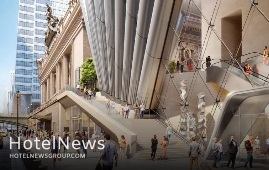
A new building is poised to transform the area around a New York City landmark and one of its busiest subway stations. Image renderings released Tuesday by RXR Realty show what would eventually be 175 Park Avenue, an 83-story tall structure that developers say will be the new Grand Hyatt hotel that will also revitalize the Grand Central Terminal with brand new public spaces. The plan is to demolish the current Grand Hyatt over the course of the next year and build the 1,646 feet tall building with up to 500 hotel rooms, 2.1 million square feet of new office space and make improvements to infrastructures around the Grand Central-42nd Street subway station. The 5,400 square feet hall would feature more signage, train schedules and arrival times, and ticketing and turnstiles will be relocated to street level to ease foot traffic. The new entrance to 42nd Street subway station will be where the ADA elevator is currently located but developers say the reconfiguration will make a more efficient route for customers with disabilities. The changes also include upgrades to the Lexington Avenue entrance where the sidewalk is expected to widen by five feet As for additional public spaces, RXR Realty said there will be three interconnected public terraces that wrap around the eastern, northern, and western sides of the building and that they will be accessible by elevator. Similar to the High Line, the Grand Central Terrace, Chrysler Terrace and Graybar Terrace will "create new vistas for pedestrians to view the neighborhood’s historic architecture" with space for outdoor seating and food and beverage concessions, the news released said.
Create: Feb 4, 2021 Edit: Feb 4, 2021 International News
The Jordan Tourism Board has partnered with workspace operator Venture X to launch a dedicated accelerator for tourism start-ups. The accelerator will be a “highly selective, equity-based three-month programme for the most promising technology start-ups or pre-scale-ups that can power the travel and tourism industry”, according to a statement from the tourism board on Wednesday. “This partnership is a response to the challenges ahead,” Abdul Razzaq Arabiat, the board's managing director, said. The accelerator programme is looking for innovative companies that are developing ways to “future-proof” Jordan’s travel and tourism industry, the statement said, as tourism companies look to rebound in the wake of Covid-19. The collapse in international travel due to the pandemic led the global tourism industry to lose $1.3 trillion in export revenue, almost 11 times more than the loss recorded during the 2008 global economic crisis, according to the UN World Tourism Organisation. Companies selected to take part will undergo a three-month intensive programme to identify a potential pilot project and scope, followed by three months of implementation working alongside the top 10 industry partners, the statement added. “The pandemic is going to change the tourism industry,” Yousef Hamidaddin, managing partner of Venture X, said. “Innovative solutions will allow people to continue to travel and explore, which represents an opportunity for entrepreneurs and start-ups.” Jordan was chosen by Lonely Planet as the Most Welcoming Destination of 2021. The country reopened to travellers in September 2020 after restrictions due to Covid-19. The tourism industry contributes 13 per cent to 15 per cent of the country’s gross domestic product and employs almost 60,000 people. The pandemic came months after a record-breaking year for tourism, with the kingdom attracting one million visitors and generating 4.1 billion Jordanian dinars ($5.8bn) in 2019.
Create: Feb 4, 2021 Edit: Feb 4, 2021 International News
Red Sea Development Company, the developer of the mammoth tourism project on Saudi Arabia’s west coast, said it awarded contracts to complete structural work for a luxury hotel and villas. Saudi Arabian contractor Al Bawani will conduct civil and structural works across 40 hotel villas on the Southern Dunes site while Swiss timber specialist Blumer Lehmann will carry out planning, construction and fabrication works for a hotel on Ummahat Al Shaykh Island, the developer said in a statement on Wednesday. The company did not disclose the value of these contracts. The contract awards "signify the start of a new phase" for the mega tourism project as it advances into hotel development, John Pagano, chief executive of the Red Sea Development Company, said. “The Red Sea Development Company has made significant progress in terms of the design and construction of key infrastructure to enable the development of hotel assets,” he added. The project is a key tenet of Saudi Arabia's tourism strategy, which aims to increase the contribution of tourism to more than 10 per cent of the kingdom’s GDP by 2030, up from 3 per cent in 2020. The Red Sea Development Company’s masterplan covers a 28,000 square kilometre site containing 90 islands. Set to welcome its first visitors in 2022, the project is expected to be completed by 2030. It will house 50 hotels containing 8,000 rooms, a luxury marina, entertainment and leisure facilities. The company, which is owned by the kingdom’s Public Investment Fund, is developing 16 hotels with 3,000 rooms across five islands and two inland sites as part of the first phase that will be delivered by 2023. This phase will cost an estimated 28 billion Saudi riyals to 29bn riyals ($7.46bn-$7.73bn) to develop. Al Bawani's work will help the developer to link villas, restaurants and central buildings within its resort, the company said. Blumer Lehmann will design and manufacture all engineered timber material for a hotel, overwater and beach villas, spa and fitness building, restaurants and an arrival building. The company said last year it had awarded contracts worth 7.5bn riyals to date. Last month, the Red Sea Development Company chose Dublin-based DAA International to operate the project's international airport. It awarded the airport design contract to UK-based architecture firm Foster + Partners in October 2019. The project is being built under a “regenerative tourism” model, which aims not only to protect local habitats, but also create conditions for local environments to thrive. Only 22 of the site's 90 islands will be built on and visitor numbers to the area will be capped at one million a year.
Create: Feb 4, 2021 Edit: Feb 4, 2021 International News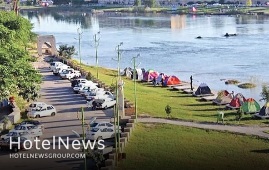
Well-planned travels during the Persian New Year (Noruz) holidays, which will start on March 20, would be possible in close coordination with the National Headquarters for Coronavirus Control, the deputy tourism minister said on Tuesday. In order to create social vitality during the holidays, the ministry has set some rules for possible Noruz trips to control and monitor them carefully, Vali Teymouri said. “The trips will be possible only within the framework of planned tours through licensed travel agencies and under the supervision of the tourism ministry.” For people, who travel individually and outside of the tours, a reservation for an authorized accommodation center will be necessary, the official added. He also emphasized that all travelers and tourists need to follow strict health protocols during their trips and stays. Last March, which is the most bustling and booming period for the tourism sector because it culminates in Noruz, all celebrations were canceled in all 31 provinces across the country, and all museums and historical sites, affiliated with the Ministry of Cultural Heritage, Tourism and Handicrafts went on a lockdown due to the coronavirus pandemic. Last year, before the Persian New year, the tourism minister Ali-Asghar Mounesan asked people to postpone or reschedule tours to help the tourism industry deal with the coronavirus outbreak. “My suggestion to my dear people is that they do not cancel their hotel reservations and domestic tours as far as possible to help the tourism industry and prevent it from bankruptcy by making their reservations in time after the virus is controlled.” Iranians made 74 million overnight stays in their domestic trips during the Noruz holidays two years ago (2019), which showed a 20 percent increase year on year. And some 132 million visits to tourist attractions were registered during the mentioned period, which showed a 34 percent growth year on year, according to data compiled by the Ministry of Cultural Heritage, Tourism and Handicrafts. The Islamic Republic was ranked the third fastest-growing tourism destination in the globe in 2019, with 27.9 percent growth year on year, according to the latest statistics released by the United Nations World Tourism Organization (UNWTO). However, the country expects to reap a bonanza from its numerous tourist spots. Under the 2025 Tourism Vision Plan, it aims to increase the number of tourist arrivals from 4.8 million in 2014 to 20 million in 2025.
Create: Feb 4, 2021 Edit: Feb 4, 2021 Regional News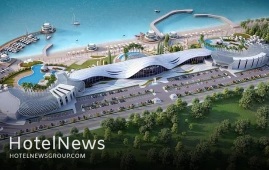
Iranian President Hassan Rouhani on Tuesday inaugurated tens of tourism-related projects via a video conference on the occasion of Ten-Day Dawn (Jan. 31- Feb. 10, marking the victory anniversary of the Islamic Revolution). A total investment value of 14 trillion rials (about $334 million at the official exchange rate of 42,000 rials per dollar) is channeled through the projects countrywide, Cultural Heritage, Tourism, and Handicrafts Minister Ali-Asghar Mounesan announced on Monday. Tourism-related projects worth 220 trillion rials ($5.2 billion) had previously come on stream since President Rouhani inaugurated his second four-year term in 2017. With these new projects being taken into account, the total investments in this sector are added up to 234 trillion rials ($5.5 billion), which is a new record, the tourism minister explained. The Ministry of Cultural Heritage, Tourism and Handicrafts has played an important role in the country’s currency earnings, as in 2019, the tourism sector’s share of the country’s GDP was $11.8 billion, which is a very significant number, Mounesan said. Referring to passenger flows, he stated some 8.8 million foreign nationals visited the Islamic Republic during the first ten months of the past Iranian year 1398(March 20, 2019-March 19, 2020) before the coronavirus outbreak puts almost everything on a halt. Despite the coronavirus pandemic and the damages it has caused to the country’s tourism, this sector is still running and several projects are underway, the official added. Back in August, the minister announced that Iran’s travel sector has suffered a loss of 12 trillion rials (some $2.85 billion) since the outbreak of the coronavirus pandemic, however, he mentioned that all the tourism businesses across the country will have the capacity to fully resume their activities both in domestic and foreign markets. “Many tourism projects have been completed, or are being implemented, showing that a very good capacity has been created in the field of tourism in the country and [this trend] should not be stopped,” he explained. Mounesan went on to say that 2,451 tourism-related projects worth 1,370 trillion rials (around $32 billion) are being implemented across the country that signals a prosperous future for Iran’s tourism sector. The tourism minister also said the coronavirus pandemic should not bring traveling to a complete standstill. “Corona is a fact, but can the virus stop tourism? Certainly not. For us, the coronavirus is a new experience in dealing with crises that teaches tourism experts around the world how to deal with such a disaster, and thankfully governments are turning this into an opportunity for better planning.” Some experts believe that the coronavirus pandemic may turn tours and travels into luxury items as observing health protocols will raise the cost of travel in the country. Mohammad Ali Vaqefi, the vice president of the Iranian Tour Operators Association, warned earlier in June that with the continuation of the coronavirus outbreak, tourists may prefer individual travel rather than tours, adding that they may also choose to go on a trip by their vehicles and stay in tents or nature instead of hotels. In the global scene, part of the new travel puzzle is the jet-set mindset focusing on tough hygiene care and social distancing as cardinal guidelines for slowing the spread of the virus. So the average expenditure will be raised for a typical traveler particularly inbound passengers so lesser ones can afford to buy privacy and space and safer travel amenities. Iran expects to reap a bonanza from its numerous tourist spots such as bazaars, museums, mosques, bridges, bathhouses, madrasas, mausoleums, churches, towers, and mansions, of which 24 being inscribed on the UNESCO World Heritage list. Under the 2025 Tourism Vision Plan, it aims to increase the number of tourist arrivals from 4.8 million in 2014 to 20 million in 2025. The latest available data show eight million tourists visited the Islamic Republic during the first ten months of the past Iranian calendar year (started March 21, 2019).
Create: Feb 4, 2021 Edit: Feb 4, 2021 Regional News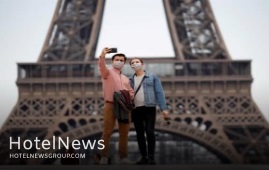
The coronavirus crisis cost the global tourism sector $1.3 trillion in lost revenue in 2020 as the number of people traveling plunged, the UN said, calling it "the worst year in tourism history". Revenue lost last year amounted to "more than 11 times the loss recorded during the 2009 global economic crisis," the Madrid-based UN World Tourism Organization (UNWTO) said in a statement, warning that between 100 million and 120 million direct tourism jobs were at risk, AFP reported. International tourist arrivals fell by one billion, or 74 percent, in 2020 with Asia, the first region to feel the impact of COVID-19, seeing the steepest decline, it added. "While much has been made in making safe international travel a possibility, we are aware that the crisis is far from over," UNWTO head Zurab Pololikashvili said in the statement. The rollout of COVID-19 vaccines is expected to "slowly normalize travel" in 2021 but many countries are reintroducing travel restrictions such as quarantines, mandatory testing and border closures "due to the evolving nature of the pandemic", the body said. The Asia and Pacific region recorded an 84 percent drop in arrivals. It was followed by Africa and the Middle East with a 75 percent drop, Europe with 70 percent fewer visitors "despite a small and short-lived revival in the summer" and the Americas where arrivals fell by 69 percent. International tourism arrivals rose by four percent in 2019 to 1.5 billion, with France the world's most visited country, followed by Spain and the US. The last time international tourist arrivals posted an annual decline was in 2009 when the global economic crisis led to a four percent drop. The UNWTO said most experts do not see a return to pre-pandemic levels of tourism activity before 2023. Open-air and nature-based tourism will see growing demand when tourism restarts, with domestic tourism also expected to be more popular, the body said. While international tourism has taken a hit from the outbreak of disease in the past, the coronavirus is unprecedented in its geographical spread. By comparison, international tourism arrivals fell by just 0.4 percent in 2003 after the outbreak of Severe Acute Respiratory Syndrome (SARS) which killed 774 people worldwide. The coronavirus has killed at least 2,176,000 people since the outbreak emerged in China in December 2019, according to a tally from official sources compiled by AFP. The tourism industry accounts for about 10 percent of the world's gross domestic product (GDP) and jobs.
Create: Feb 3, 2021 Edit: Feb 3, 2021 International News
